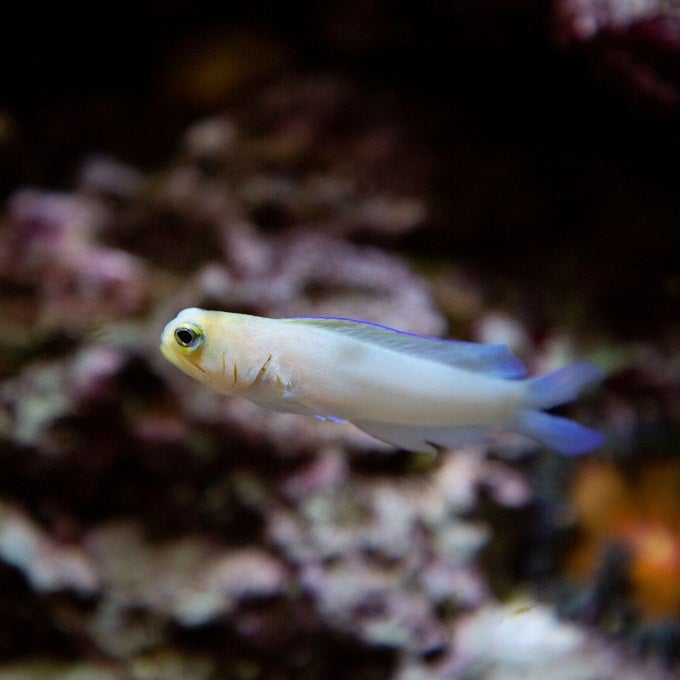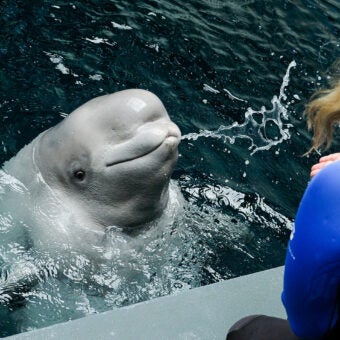-
Size
Up to 4 inches (10 cm) -
Diet
Zooplankton -
Range
Atlantic Ocean -
Habitat
Reefs in clear tropical coastal waters
Physical Characteristics
- Coloration is light bluish-gray with numerous pale blue dots. The head and front part of the body, as well as the anterior part of the dorsal fin is yellow.
- Elongated body with a blunt head, large protruding eyes and a large mouth.
- Maximum length of 4 inches (10 cm).
Animal Fun Fact
Yellowhead jawfish build burrows that can be up to 1 foot (30 cm) deep.
Diet / Feeding
- Diet consists of zooplankton.
Range / Habitat
- Occurs in the Western Central Atlantic from southern Florida and the Bahamas and to Barbados and Northern South America.
- Found associated with reefs in clear tropical coastal waters at depths up to 130 feet (40 m). Inhabits a burrow it excavates in crushed coral or sand.
- Can be seen hovering vertically above or near the entrance to its burrow.
Reproduction & Growth
- Male courts female by swimming with body arched and fins extended. Spawning occurs deep in the male’s burrow. After spawning, male holds a ball of fertilized eggs in its mouth where they incubate until they hatch.
Conservation Status
- “Not Evaluated” on the IUCN Red List.
Additional Information
- Very industrious. Spends most of the daylight hours feeding on plankton or using its large mouth to move sand or shell fragments from within and around its burrow, which can reach a foot deep.
- Will retreat into its burrow at night and place a stone or shell over the entrance. Extremely territorial, it will rise up out of its burrow with its mouth wide open as a threat display intended to drive away other fish. These threats often work in preventing physical confrontations.
- Highly social and usually lives in sand flats in colonies of 50 or more individuals.
Sources
- Peterson Field Guides – Atlantic Coast Fishes. Robins, C.R. and Ray, G.C., pg. 216
- Field Guides – Atlantic Coast Fishes. Robins, C.R. and Ray, G.C., pg. 216
- www.ocean-adventures.org/jawfish.html
-







